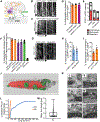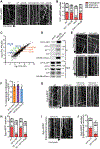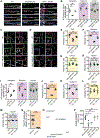Phosphatidylinositol 3,5-bisphosphate facilitates axonal vesicle transport and presynapse assembly
- PMID: 37824668
- PMCID: PMC10938084
- DOI: 10.1126/science.adg1075
Phosphatidylinositol 3,5-bisphosphate facilitates axonal vesicle transport and presynapse assembly
Abstract
Neurons relay information via specialized presynaptic compartments for neurotransmission. Unlike conventional organelles, the specialized apparatus characterizing the neuronal presynapse must form de novo. How the components for presynaptic neurotransmission are transported and assembled is poorly understood. Our results show that the rare late endosomal signaling lipid phosphatidylinositol 3,5-bisphosphate [PI(3,5)P2] directs the axonal cotransport of synaptic vesicle and active zone proteins in precursor vesicles in human neurons. Precursor vesicles are distinct from conventional secretory organelles, endosomes, and degradative lysosomes and are transported by coincident detection of PI(3,5)P2 and active ARL8 via kinesin KIF1A to the presynaptic compartment. Our findings identify a crucial mechanism that mediates the delivery of synaptic vesicle and active zone proteins to developing synapses.
Figures




References
-
- Nunnari J, Walter P, Regulation of organelle biogenesis. Cell 84, 389–394 (1996). - PubMed
-
- Warren G, Wickner W, Organelle inheritance. Cell 84, 395–400 (1996). - PubMed
-
- Takamori S. et al., Molecular Anatomy of a Trafficking Organelle. Cell 127, 831–846 (2006). - PubMed
-
- Zhai RG, Bellen HJ, The architecture of the active zone in the presynaptic nerve terminal. Physiology (Bethesda) 19, 262–270 (2004). - PubMed
MeSH terms
Substances
Grants and funding
LinkOut - more resources
Full Text Sources
Research Materials
Miscellaneous

